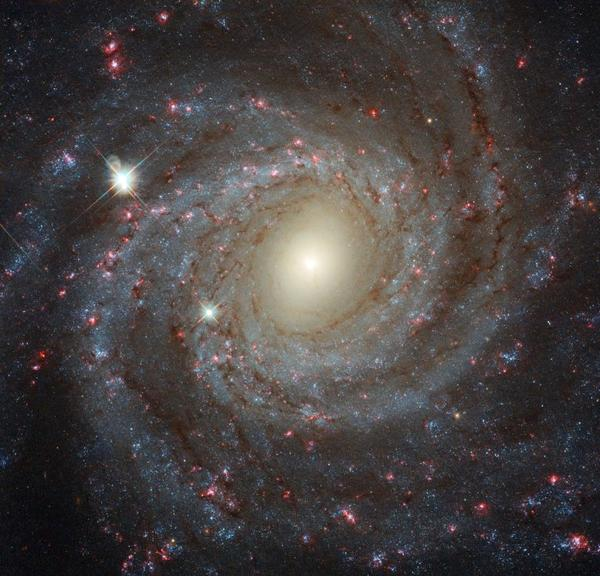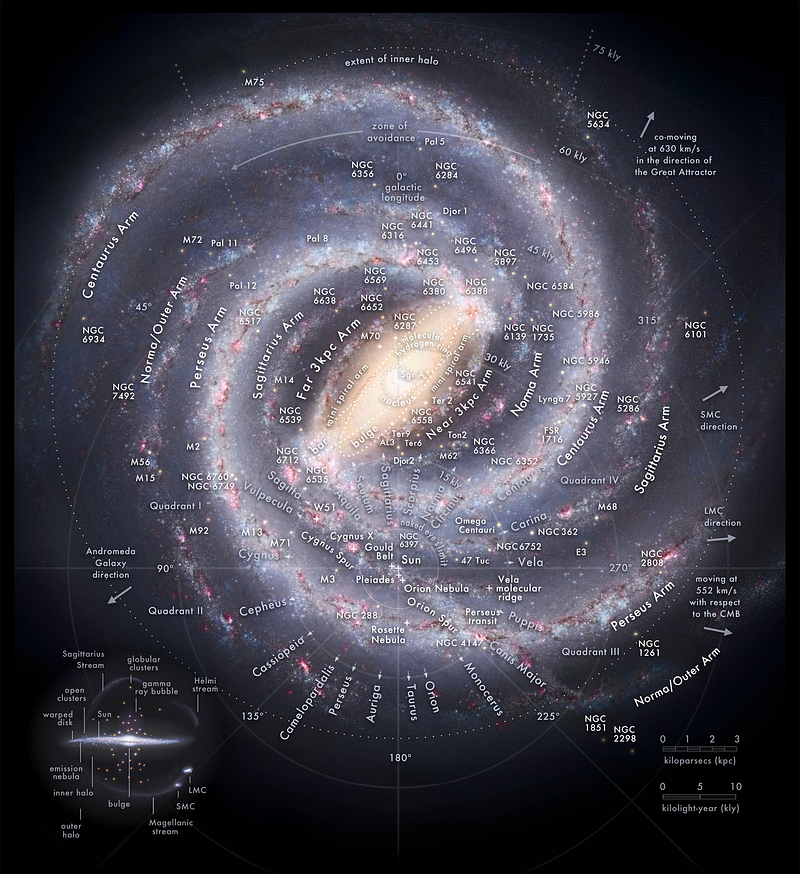Understanding the Structure of Our Galaxy: The Milky Way Revealed
Written on
Chapter 1: The Milky Way's Shape
When you look up the term "galaxy," you'll often find images resembling the one shown below. These visuals are well-accepted representations of various galaxy types based on direct observations. Thanks to advanced technology, astronomers can capture high-resolution images of faraway celestial bodies. Yet, a pertinent question arises: how do we ascertain that our own galaxy, the Milky Way, is spiral in shape when we cannot step outside of it to observe its structure?

To appreciate this, we must delve into significant discoveries made in the early 20th century. Notably, it was established that various spiral, elliptical, and other galaxy forms are not part of the Milky Way; rather, they are distinct galaxies, positioning our nebula as merely one among many. This led to the understanding that by observing these galaxies, we could classify them based on their appearance. Edwin Hubble introduced a comprehensive classification system that highlighted three primary types: spiral, elliptical, and irregular galaxies. Additionally, it was discovered that our Sun is not at the galactic center; instead, it resides at a distance, revolving around the center much like planets orbit the Sun.

If you find yourself in a location with minimal light pollution and capture a long-exposure photograph of the night sky, you'll notice a luminous band known as the Milky Way. This observation provides insight into our galaxy's shape, suggesting it is flat. This reasoning stems from the fact that the Milky Way appears as a flat disk from a particular perspective, allowing us to conclude that it is not elliptical. Furthermore, the distribution of the Milky Way across the night sky is uneven, reinforcing the idea that its shape is not spherical, as depicted in some classifications. Below, you can see a comparison of spiral and elliptical galaxy appearances.

Through extensive monitoring of millions of stars within our galaxy, scientists have utilized the Doppler effect to measure their velocities. This data enabled the creation of movement maps showing some stars moving closer while others recede. These maps provided a conceptual image of the stars' circular orbits. Notably, peculiar star behavior in specific areas indicated the presence of a supermassive black hole at the Milky Way's core, which accounted for the circular motion of surrounding stars. Further observations of gas and dust in star-forming regions, along with the identification of prominent spiral arms, bolstered the theory regarding the structure of our galaxy.

In conclusion, by gathering essential data and examining nearby galaxies, we've come to understand the precise geometric configuration of our cosmic "home." Humanity has achieved insights into phenomena that cannot be directly observed, demonstrating that it's less about seeing an object and more about using available information wisely.
Clap if you'd like to see more articles about space in your feed!
Subscribe to our channel and feel free to ask questions, which I will address in future articles.
Chapter 2: Exploring the Milky Way's Appearance
In the first video, "How Do We Know What the Milky Way Looks Like?", we delve into the methods and technologies that have allowed scientists to understand the structure of our galaxy despite being embedded within it.
The second video, "How do we know the Milky Way is a spiral?", further investigates the evidence supporting the spiral shape of our galaxy, showcasing the research and discoveries that confirm its structure.